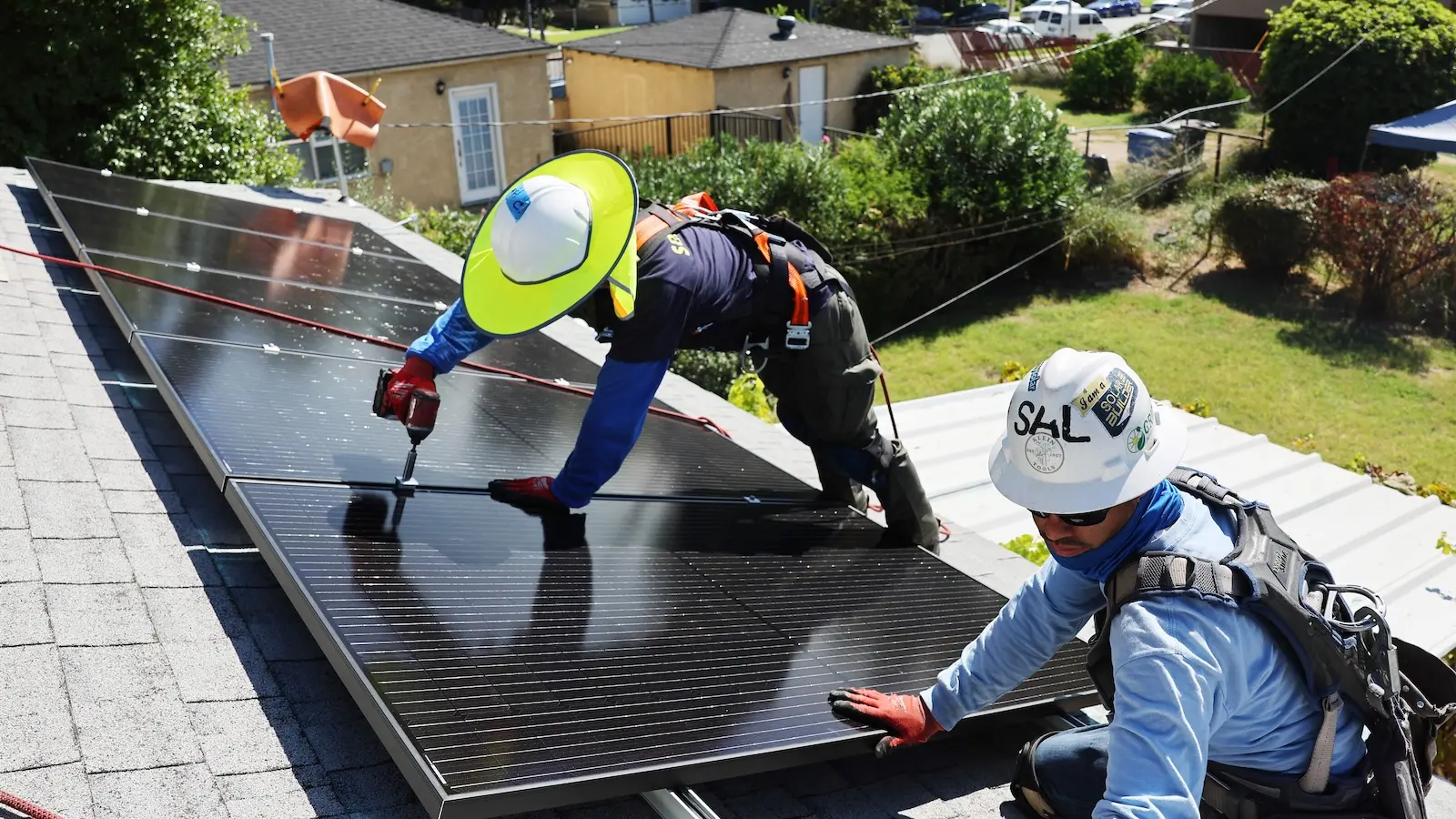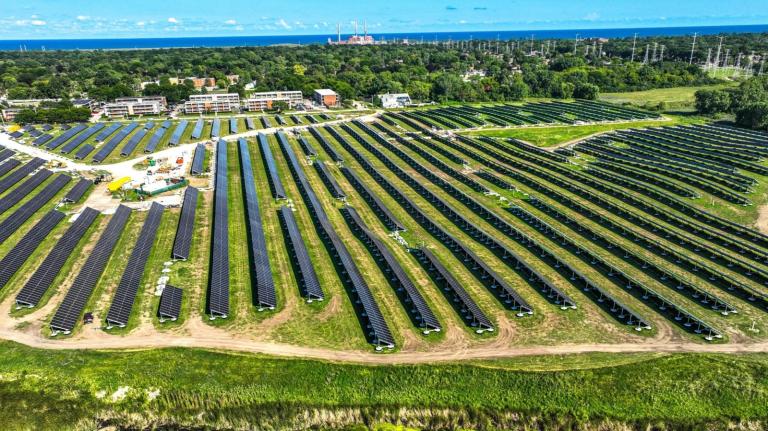Each year, nearly 1.3 million households across the country have their electricity shut off because they cannot pay their bill. Beyond risking the health, or even lives, of those who need that energy to power medical devices and inconveniencing people in myriad ways, losing power poses a grave threat during a heat wave or cold snap.
Such disruptions tend to disproportionately impact Black and Hispanic families, a point underscored by a recent study that found customers of Minnesota’s largest electricity utility who live in communities of color were more than three times as likely to experience a shutoff than those in predominantly white neighborhoods. The finding, by University of Minnesota researchers, held even when accounting for income, poverty level, and homeownership.
Energy policy researchers say they consistently see similar racial disparities nationwide, but a lack of empirical data to illustrate the problem is hindering efforts to address the problem. Only 30 states require utilities to report disconnections, and of those, only a handful provide data revealing where they happen. As climate change brings hotter temperatures, more frequent cold snaps, and other extremes in weather, energy analysts and advocates for disadvantaged communities say understanding these disparities and providing equitable access to reliable power will become ever more important.
“The energy system as it is currently designed is failing to adequately serve all customers,” said Shelby Green, a researcher with the nonprofit Energy and Policy Institute. “Economically disadvantaged and minority people’s lives will be the ones most at threat.”
The research in Minnesota, led by Bhavin Pradhan and Gabriel Chan, found that households of color served by Xcel Energy experienced disproportionately more shutoffs and more frequent outages. Between 2020 and 2022, neighborhoods with the highest concentration of people of color were 47 percent more likely than other areas to lose power for more than half a day.
Pradhan told Grist he was surprised to find that those racial differences held even over a period of several years. “It wasn’t just one year where there was a spike, but consistently over time,” he said. The team analyzed data for groups of a few hundred households from 2017 to 2022 — a level of spatial detail that allowed them to isolate the effect of race at a neighborhood level. Xcel Energy has noted that its own grid equity analysis found similar racial disparities in shutoffs and outages. But the utility highlighted the age of a home as an equally significant factor for extended outages, and largely attributed cutoffs to a customer’s income. In a submission to the public utilities commission, the company noted that “disconnections are correlated with poverty, and — for a variety of deeply entrenched economic and social reasons that are not driven by the energy system — poverty is correlated with race.” It added that the utility offers programs to help customers cover their bills.
Erica McConnell, staff attorney at the Environmental Law and Policy Center, countered that the utility’s own disconnection data proves those efforts are insufficient. Xcel Energy is currently updating a five-year plan outlining future grid investments, a process McConnell says provides an opportunity for the utility and regulators to invest in communities disproportionately impacted by disconnections and outages. The Center and other organizations have also called on the state Public Utilities Commission to consider reinstating a moratorium on disconnections, introduced at the height of the pandemic, until it can determine how best to address these disparities.
One potential measure that could help is expanding community solar, battery storage, and other distributed energy resources. The University of Minnesota study found that the communities bearing an outsized burden of disconnections and outages also have the greatest capacity to host small-scale clean energy projects like rooftop solar — a point McConnell echoed.
“Historically, a lot of communities haven’t had access to those kinds of programs,” she said. In the long term, distributed energy resources that “encourage ownership by the communities and wealth-building could be a valuable way to address the issue” by ensuring residents have access to cheap, reliable power.
Green, the researcher at the Energy and Policy Institute, noted that rather than simply pointing to broader issues, utilities like Xcel Energy should look at how their operations might be perpetuating or amplifying existing inequities.
Minnesota’s study is one of a few that have documented the role race plays in shutoffs. In Illinois, researchers found that from 2018 through 2019, electricity customers in predominantly Black and Hispanic zip codes were four times more likely to be disconnected than other areas, even when accounting for income and other factors. A national survey by researchers at Indiana University reached a similar conclusion: between April 2019 and May 2020, researchers found that Black and Hispanic households were roughly twice as likely to have their power shut off compared to white households.
Those studying energy insecurity aren’t sure exactly what causes so strong a correlation between race and shutoffs. Sanya Carley, a professor and researcher at the University of Pennsylvania’s Kleinman Center for Energy Policy, cites two possible factors. One is energy burden, or the proportion of a household’s income spent on gas and electricity. The other is the age of their housing, since older buildings tend to be less energy efficient. But her team’s research has found that those reasons account for only around 10 percent of the racial disparities found in utility disconnections.
“There is something left unexplained about the energy experiences of Black and Hispanic households that needs to be identified to fully understand the prevalence of energy insecurity in these groups,” the study authors wrote. Green suggested another factor could be implicit bias in utility operations. A customer service representative, for example, could respond less leniently to a customer living in a community of color or low-income area. But overwhelmingly, energy policy experts told Grist that more data is needed to understand the extent of racial inequities and the forces driving them. Carley noted that unless required by law, most utilities don’t voluntarily share data on disconnections. Just six states, including Minnesota, Illinois, and California, require location data on utility shutoffs, typically at the zip code level. In most others that require reporting, utilities often share only the total number of disconnections each year. What’s more, those laws apply only to regulated investor-owned utilities, meaning municipal utilities or co-ops may not share any data at all.
Energy justice advocates have long called for widespread requirements for utilities to report on disconnections and who they impact. Pradhan, the co-author of Minnesota’s study, told Grist that access to such data could enable “more studies and more data-driven decisionmaking” on where and how utilities should invest in improving their grid and electricity service.
More urgently, Carley, Green, and others say consumer protections against disconnections can shield households from the brunt of life-threatening cutoffs. Already, 41 states prevent or limit utilities from disconnecting customers during bouts of extreme cold. But only 20 states, including Minnesota, have restrictions against shut-offs during periods of extreme heat — though that is beginning to change. After a deadly 2021 heat dome across the Pacific Northwest, lawmakers in Washington passed a law last summer preventing utilities from cutting off power to customers on days when a heat-related alert is issued.
“Power and water can be a matter of life and death during a heat wave,” Washington State Representative Sharlett Mena said at the time. “This legislation will ensure that every Washingtonian has the ability to protect themselves against extreme heat.”





